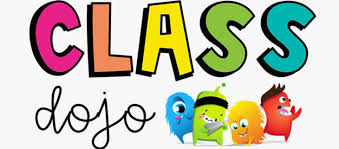
MORE INFORMATION
Class Dojo is an online behavior management system intended to foster positive student behaviors and classroom culture. Students earn ‘Dojo Points’ based on their classroom conduct. Teachers use Class Dojo to keep parents up to date on student progress and classroom happenings. Class Dojo is completely free for users.
APPROACH
Class Dojo’s primary goal is to encourage positive student behaviors and to provide a means for teachers and parents to communicate frequently and effectively about student development. According to the company, the product’s approach is less about ‘classroom management’ and more about ‘classroom culture’, in other words, encouraging the positive instead of discouraging the negative.
Class Dojo for Teachers
Teachers use Class Dojo to promote positive behaviors in their classroom and to strengthen lines of communication between school and home. This is done primarily through Class Dojo’s ‘Dojo Point’ system and messaging system that connects teachers and parents. Class Dojo is fully accessible on computers, tablets, smartphones, and can even be used on interactive whiteboards and projectors.
The Class Dojo website includes several teacher resources including ‘cheat sheets’ to learn the basics of the system, parent letters and back-to-school night presentations, and video tutorials for teachers, parents, and students. Teachers also have the option to print out Class Dojo decorations to display around their classrooms.
Teachers set up their Class Dojo profiles through the company’s website. The process begins by naming the class and assigning a grade level. Teachers are prompted to establish ‘class values’. Class Dojo includes six pre-existing ‘positive’ class values that teachers may opt to choose from:
- Helping others
- On task
- Participating
- Perseverance
- Teamwork
- Working hard
Class Dojo also suggests five ‘needs work’ class values:
- Disrespect
- No homework
- Off task
- Talking out of turn
- Unprepared
Class values are fully customizable. Teachers may select any or all of Class Dojo’s suggested class values, or they may establish class values unique to their specific classroom and needs. Class values are used to assign ‘Dojo Points’; teachers determine the weight of positive behaviors (anywhere from 1 to 5 points) and the weight of negative behaviors (anywhere from -1 to -5 points). For example, a student may earn two Dojo Points for teamwork, but could lose Dojo Points for being unprepared for class.
After establishing parameters for class values and Dojo Points, teachers can manually populate their class rosters or copy and paste student names from Microsoft Word or Excel documents. Student profiles are assigned a unique Dojo ‘monster’, a character that appears on the student’s personal page. Dojo monsters can be assigned randomly, or teachers may choose to select monsters for each student. Teachers then invite parents to join their Class Dojo classroom by printing invitations or sending a text message or email with a unique access code for their student’s profile.
The Class Dojo teacher page is broken into three areas: ‘Classroom’, ‘Class Story’, and ‘Messages’. The Classroom tab allows teachers to track class points, individual student points, and generate reports. Teachers can view attendance reports as well as student and whole-class behavior metrics. Teachers can filter results based on timeframe and view the data as a ‘donut’ (Class Dojo’s version of a circle graph) or in a spreadsheet.
The Class Story tab allows teachers to post photos and messages so that parents can stay up-to-date on what’s happening in the classroom. The Messages tab gives teachers the opportunity to send direct and whole-class messages to parents. Messages are sent in the form of an email or an in-app text message depending on how each parent chooses to use Class Dojo. Teachers get a receipt indicating if and when parents have read the message. Class Dojo also notifies teachers when they receive messages from parents or when parents sign up to be a part of the classroom.
Class Dojo for Parents
Parents can access Class Dojo through the company’s website or by downloading the iOS or Android apps. Parents can access behavior information for multiple children across multiple classrooms by adding each unique access code assigned to them.
Similar to the teacher page, parents can view their child’s behavior ‘donut’, a circle graph that shows the breakdown of behaviors for the chosen time period. Parent profiles include access to Class Story, Messages, Notifications, and ‘Your Kids’ to move between multiple student profiles. Within the website or app, parents can receive and send messages to their child’s teacher.
Class Dojo for Students
Students are assigned a Class Dojo ‘monster’, a little character associated with their personal profile. Through the Class Dojo website, students may see the number of Dojo Points they’ve earned (or lost) as well as a breakdown of their progress over time. Students cannot see their Dojo Points in relation to other students. Students may be a part of multiple Class Dojo classrooms.
The Class Dojo website provides users with a number of resources, including videos geared towards learners. Class Dojo’s ‘Big Ideas’ videos feature the Class Dojo monsters and teach students lessons about things like teamwork and perseverance.
The Class Dojo website emphasizes the company’s commitment to privacy and safety. The company clearly states what information they receive from users and how that information is then utilized. Class Dojo provides direction to users on how to change or delete personal information and the company automatically deletes accounts after a year of inactivity. Class Dojo products are FERPA and COPPA compliant.
PRICING
Class Dojo’s website and iOS and Android apps are completely free for teachers, administrators, and parents to use.
WHO'S USING IT?
According to Class Dojo’s website, their management system is used in one in every two schools in the United States. Class Dojo also claims 35 million users across 180 countries around the world.


